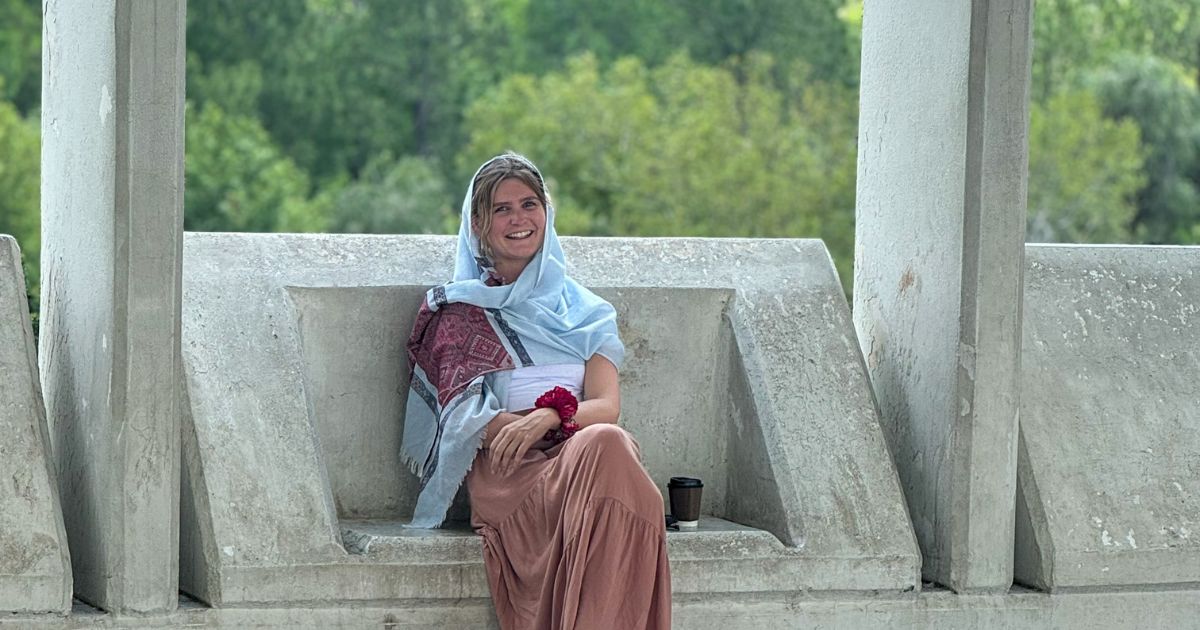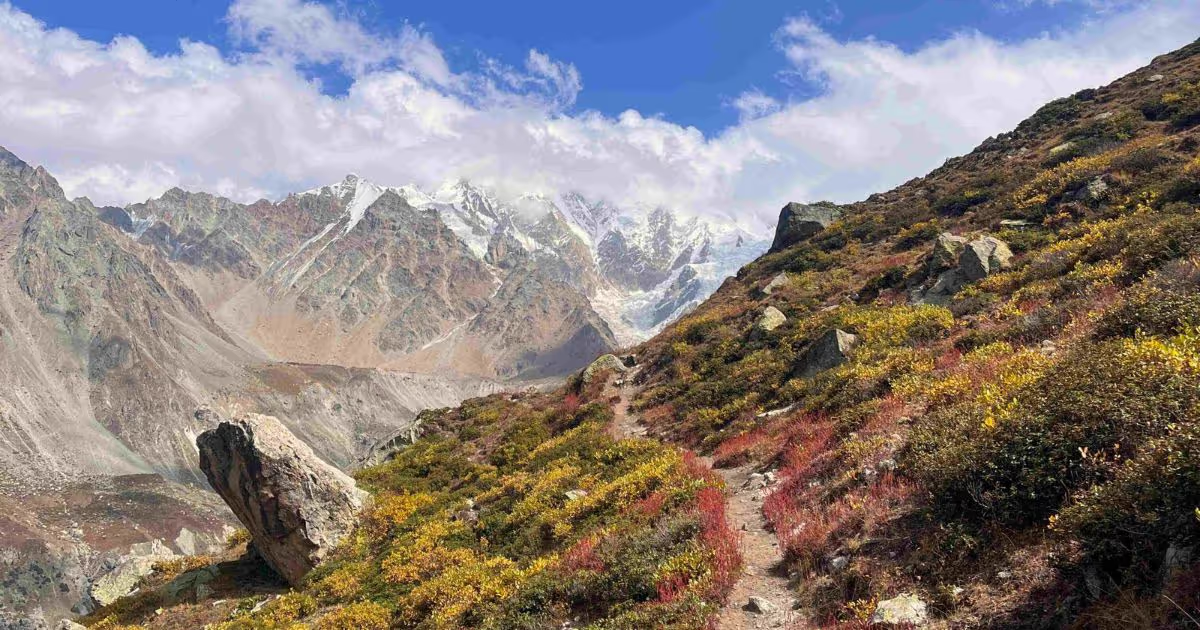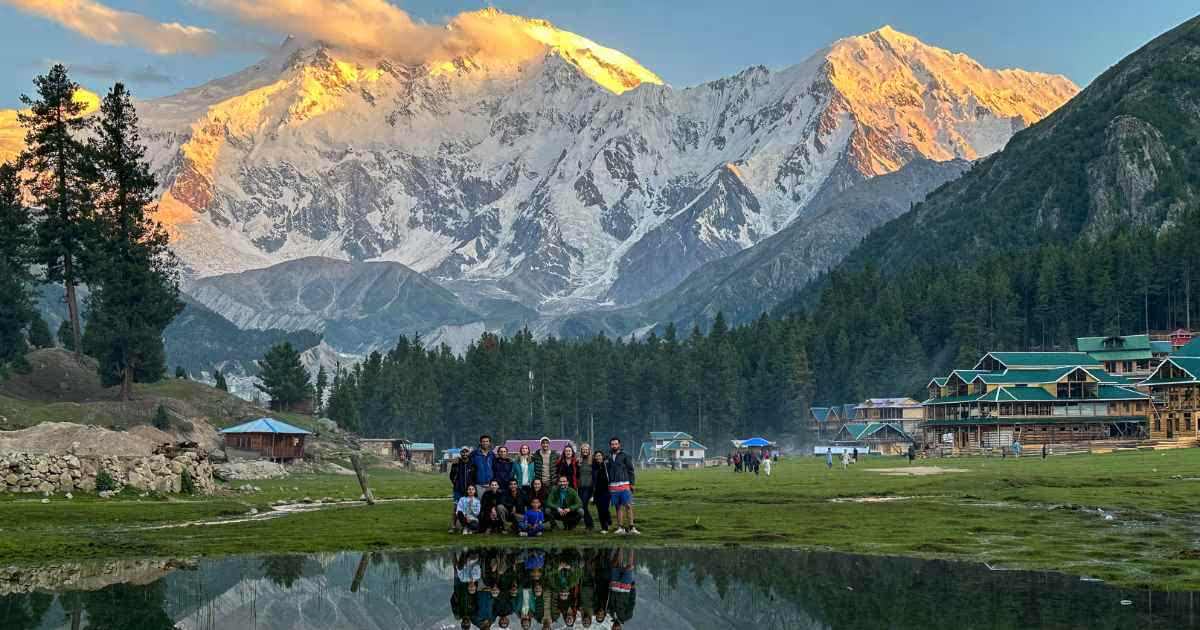
The ultimate packing list for Pakistan
Where to start when packing for Pakistan? Here’s everything you need to bring, how to dress and when to visit Pakistan.
Packing for Pakistan takes a bit more thought than your average trip. For starters, it’s a conservative Islamic country, so it’s important to dress respectfully and in line with local customs.
Add to that the fact that you’ll likely be spending a good chunk of your time in the mountains, where you definitely want to come prepared.
After spending several months exploring Pakistan and now gearing up for my third visit, I’ve figured out exactly what’s essential and what you can leave behind.
This ultimate Pakistan packing list will help you feel confident, comfortable, and fully prepared for the adventure in this extraordinary country.
Is Pakistan worth visiting?
Is that question even worth asking? After being asked hundreds of times, and knowing it’s been Googled thousands more, there’s only one honest answer:
Yes, Pakistan is absolutely worth visiting.
One of the biggest reasons I encourage people to go is so they can experience the country firsthand, beyond the lens of mainstream media, which has often painted a one-sided picture.
I want travellers to be welcomed with the kind of hospitality that stays with you forever, to savour the bold, unforgettable flavours of Pakistani cuisine, and to stand in awe of landscapes that easily rival the world’s best hiking destinations.
Form your own opinion and prepare to be surprised.
When is the best time to visit Pakistan?

The time of year you visit will not only impact what you do but also your packing list for Pakistan.
Best time for hiking in Pakistan
If hiking is what’s drawing you to Pakistan – and honestly, it’s one of the best reasons to go – you’ll want to time your visit with the northern region’s ideal weather window. That’s where you’ll find the country’s most dramatic landscapes and unforgettable trekking routes.
The best months to visit are from May to October, when hiking trails are open and key roads like the Karakoram Highway are usually clear of snow and fully accessible.
June through August is the prime trekking season in the north, with popular spots like Hunza, Skardu, and Fairy Meadows at their most vibrant. Just keep in mind, it can still get pretty warm, even at altitude.
Personally, I think September is the sweet spot. The summer heat starts to ease both in the cities and the mountains, and if you stay into late September, you’ll catch the first hints of autumn as the valleys begin to glow with golden hues.
Best time to visit cities in Pakistan
From December to February, it’s best to focus on the south and visit cities like Karachi, Lahore, and the desert regions, since much of the north is deep in snow and trekking options are limited. These are also cooler months in the city, so you won’t be walking around dripping in sweat.
How many days should you spend in Pakistan?
Pakistan is a country that rewards slow travel. With its rich mix of cities, remote villages, epic hikes, and diverse cultures, there’s so much to take in, and none of it should be rushed. Add in the long travel times between destinations (5-10-hour journeys aren’t uncommon), and it quickly becomes clear: less is more.
Trying to squeeze too much into a short trip will leave you drained instead of inspired.
If you're short on time, I’d recommend at least two weeks to do it justice. A month is even better, and if your schedule’s flexible, you could easily spend several months here without running out of things to see, taste, and experience.
Not sure where to start when planning a trip to Pakistan? Let us to do the planning for you and join one of our incredible Pakistan group trips.
What to wear in Pakistan as a tourist
Pakistan is a conservative Islamic country, so it’s important for both men and women to respect local customs and dress modestly.
While the expectations for men are generally more relaxed, most Pakistani men still tend towards more conservative dress as well. You’ll typically see them wearing a shalwar kameez (the traditional attire worn by both genders), or long trousers with a t-shirt or long-sleeved shirt.
Shorts are rarely seen in urban areas, though they’re a bit more common in the more relaxed northern regions.
What should women wear in Pakistan?

Women should make sure that their knees, shoulders and chests are covered. It’s best to stick to long skirts, dresses and trousers. T-shirts are fine, and it’s always handy to travel with a long-sleeved shirt that you can throw over the top of things.
If you’re visiting a mosque, you’ll need to make sure your body and hair are covered with a headscarf. Don’t worry, if you don’t already have a scarf, there are plenty of markets where you can buy one with stunning, intricate designs.
Read more about what it’s like as a solo female traveller in Pakistan.
What to pack for Pakistan
Your packing list for Pakistan will depend a bit on your itinerary and the time of year you visit. If your trip is packed with treks, you’ll need more hiking gear. If you’re visiting during the colder months, you’ll want to bring warmer layers.
This list is designed for a well-rounded trip, one that combines city exploration with time in the mountains. Whether you're wandering through historic streets or hiking high-altitude trails, here’s everything you’ll need for your adventure in Pakistan:
Clothing for Pakistan
- Clothes while not hiking (t-shirts, shirts, trousers, long skirts, long dresses, etc.)
- Waterproof jacket
- A down jacket or winter jacket that can keep you warm if temperatures drop to minus degrees
- Thermals
- Hiking trousers or sports leggings
- Shorts (only for men)
- Waterproof trousers (optional)
- Long-sleeved base layers
- Short-sleeved base layers/t-shirts
- Fleece
- Sports bra (women)
- Underwear
- Plenty of socks
- Gloves
- Beanie/warm hat
- Sunhat
- Sunglasses
- Hiking boots
- Trainers or sandals
Hiking equipment for Pakistan
- Hiking poles (optional but very much recommended)
- 30-60L backpack, depending on the duration of hikes you plan to do. 30-35L backpacks are suitable for day hikes, while a larger size may be needed for multi-day hikes
- Tent, sleeping bag, sleeping mat and cooking stove if you plan to be self-sufficient during multi-day treks
- Sleeping bag liner (optional)
- Water filter (optional, but can be very handy and saves plastic)
- Headtorch
Toiletries
- Suncream with at least 50 SPF
- SPF lip balm
- Shampoo
- Conditioner
- Body wash
- Deodorant
- Toothpaste
- Toothbrush
- Bug spray
- Hand sanitiser
- Tissues
- Baby wipes can come in very handy!
- Electrolytes (optional)
- Plasters
- Compeed
- Sanitary pads or tampons (can be hard to find or expensive)
Suggested medications to bring to Pakistan
- Paracetamol/Ibuprofen
- Imodium (food poisoning or diarrhoea is pretty common)
- Charcoal – it absorbs toxins and can help in the early stages of food poisoning or during
- Diamox for altitude sickness (can be bought in Pakistan very cheaply)
- Personal medications
Extra things to pack
- Travel adaptor – Pakistan uses type C
- Quick-dry towel
- High energy snacks such as protein bars, dried fruit and nuts
- Power bank
- A printed copy of your visa
- Camera
- Book/eBook reader
Join a group trip to Pakistan

Planning a trip to Pakistan can feel slightly overwhelming; there’s not a ton of information online, safety can be a concern and transport logistics can be a little tricky.
Joining a group trip is one of the best ways to explore Pakistan, and our women-only Best of Pakistan: Hikes, Hospitality, and Hot Chai is one of the best itineraries available, hosted by the country's top guides.
FAQs
Do I need a visa for Pakistan?
Tourists from 120 countries can now obtain a visa prior to arrival, valid for 90 days, at no cost. You can check this list of eligible countries via Pakistan’s official visa site.
The visa can be processed within 24-48 hours, but we advise not leaving it to the last minute. The new handy app makes applying for your Pakistan visa so much easier than before. All you’ll need is your passport and a photograph.
As with everything involving the trip, we’re on hand to help with the visa process.
Is Pakistan safe?
In recent years, Pakistan has made noticeable progress in boosting tourism and improving internal security, particularly in areas popular with travellers.
Cities like Lahore, Islamabad, and Karachi have become more accessible, while northern destinations such as Hunza Valley, Skardu, and along the Karakoram Highway continue to welcome more tourists every year.
We’ve been running group tours in Pakistan for three years now, and guests have constantly commented on how safe they have felt.
Who is Stay Wild Travel?
Stay Wild organizes group trips for women to adventurous destinations — places you may have thought were too challenging to explore solo or too complicated to plan.
Our tours are all about authentic local experiences, empowering women, and building meaningful connections with the people, culture, and traditional cuisines of each destination.
You’ll share these unforgettable moments with a group of like-minded women, completely stress-free.
Do you run group trips to Pakistan?
We've been running group trips to Pakistan for 3 years and have shown over 60 people how incredible this country is. Check out our women-only Best of Pakistan: Hikes, Hospitality and Hot Chai group tour.
Keep Exploring
Discover more travel tips, recommendations and stories from inspiring female travellers.
.avif)


.jpg)

